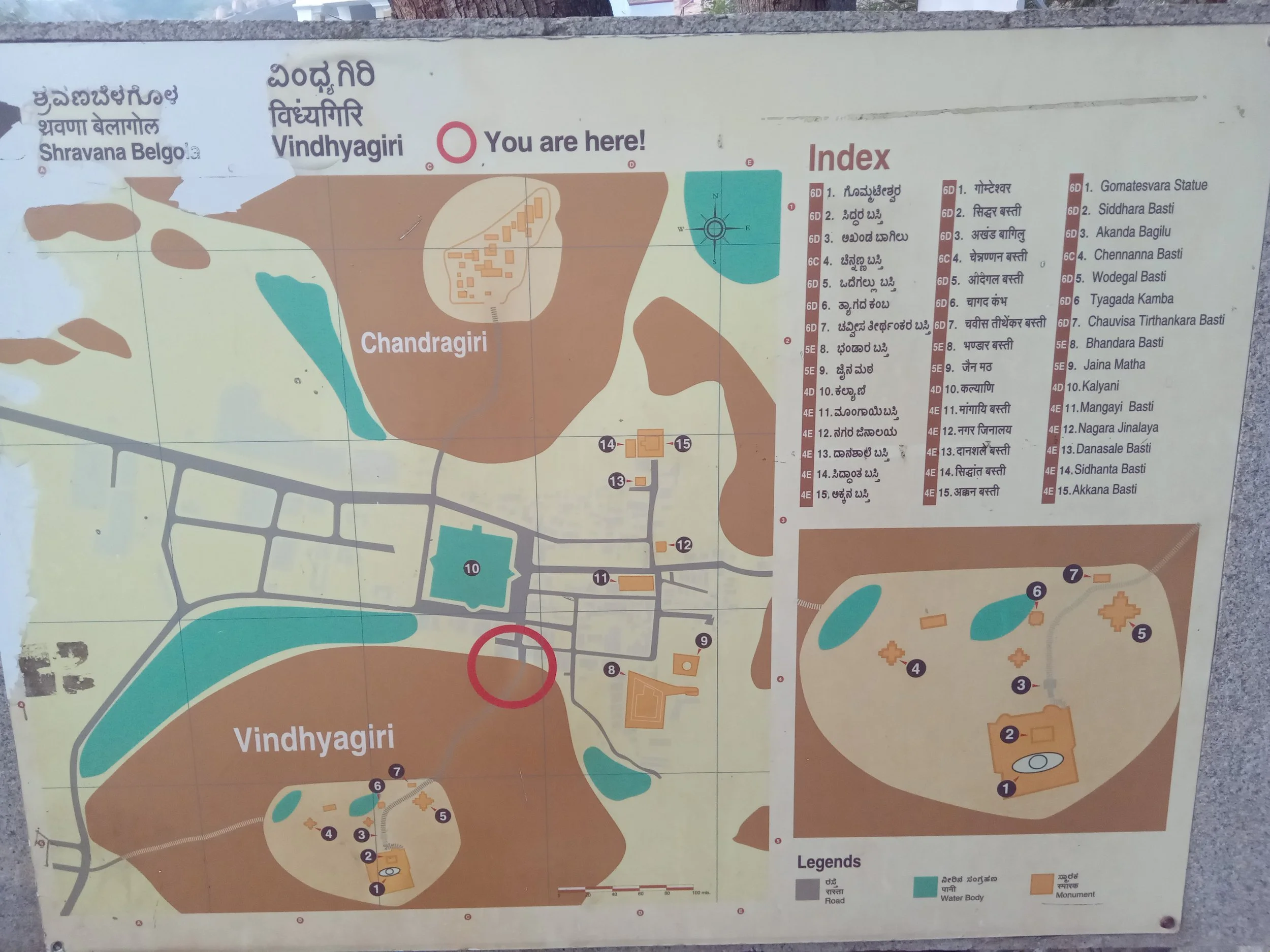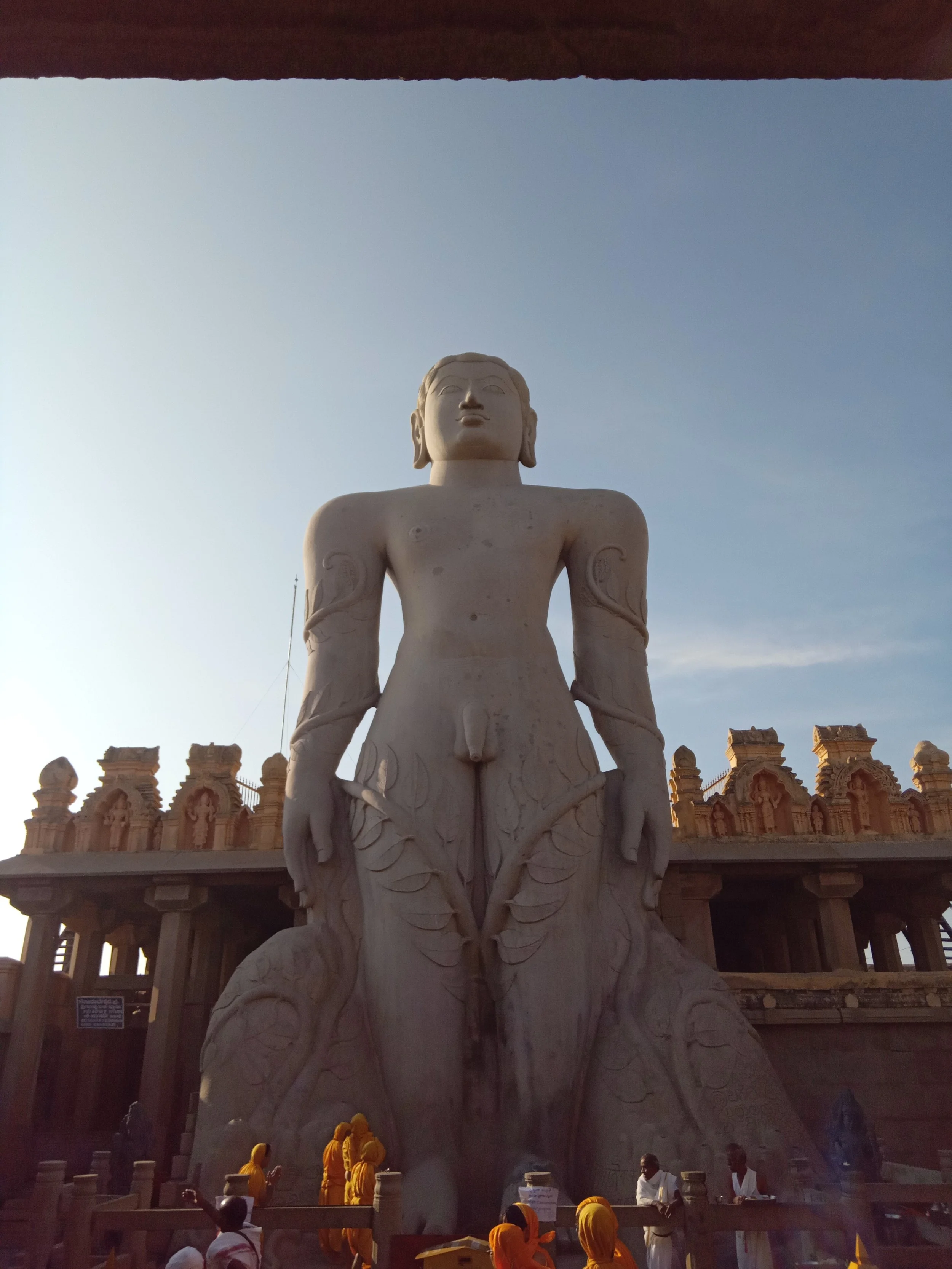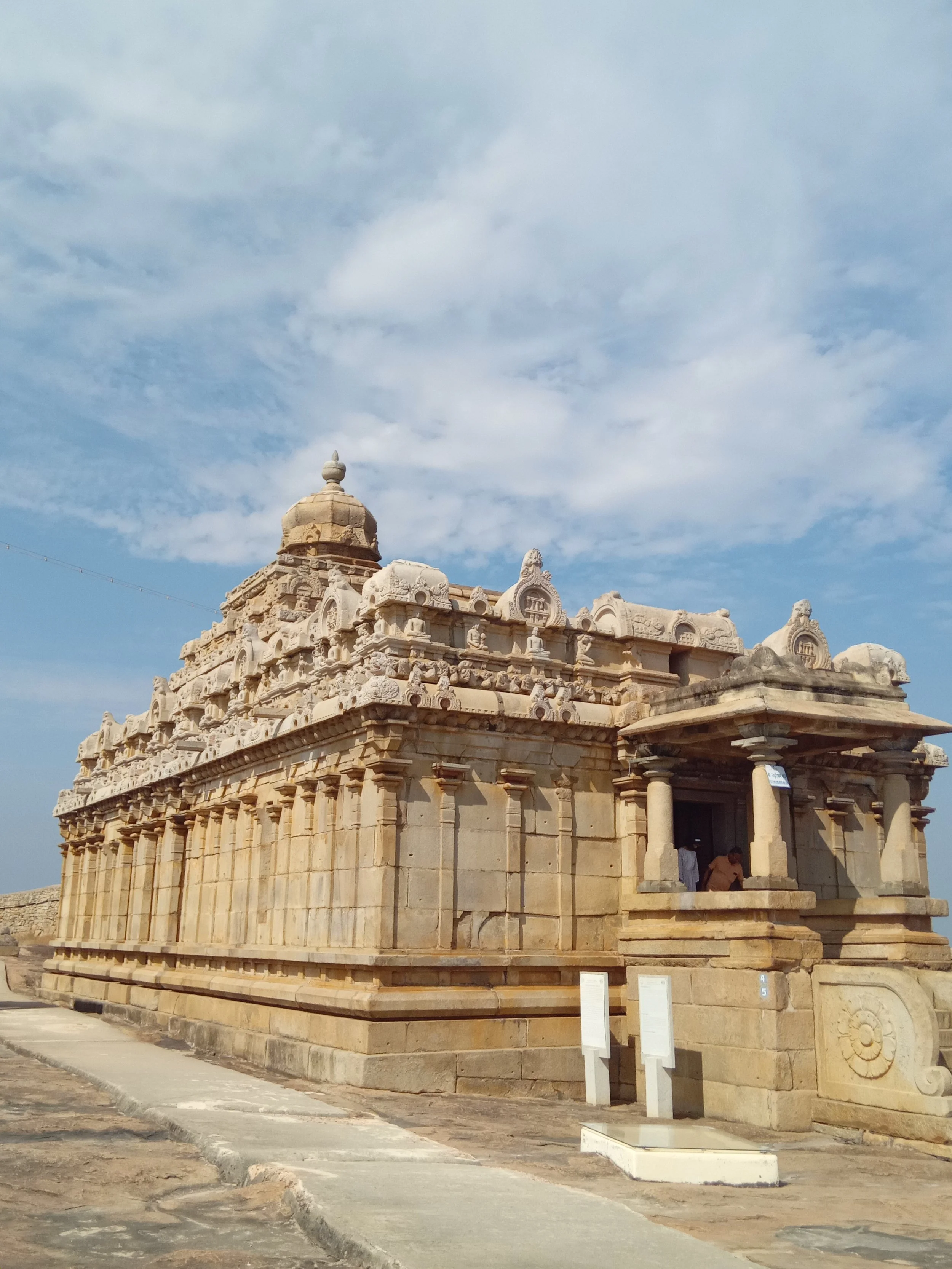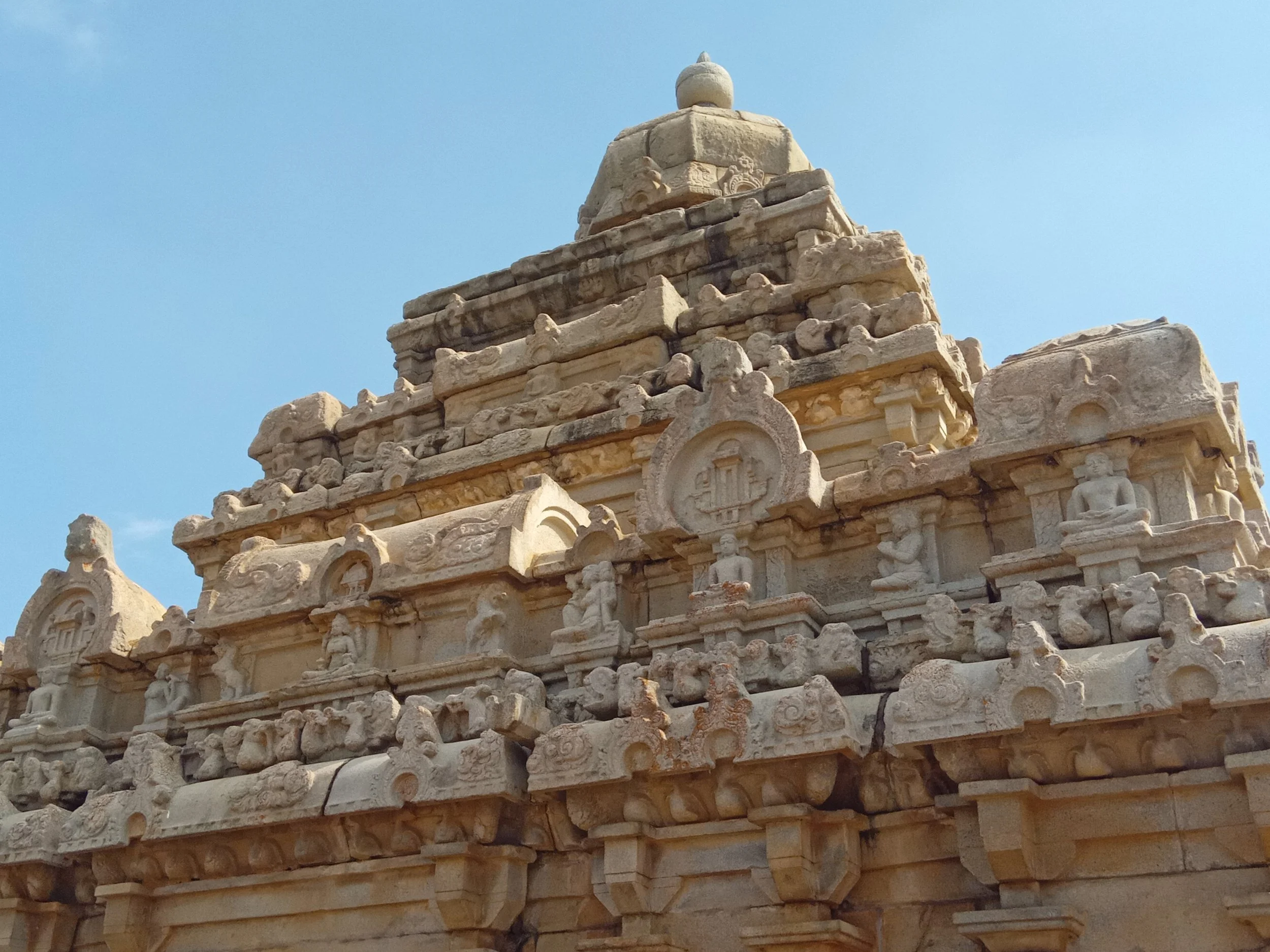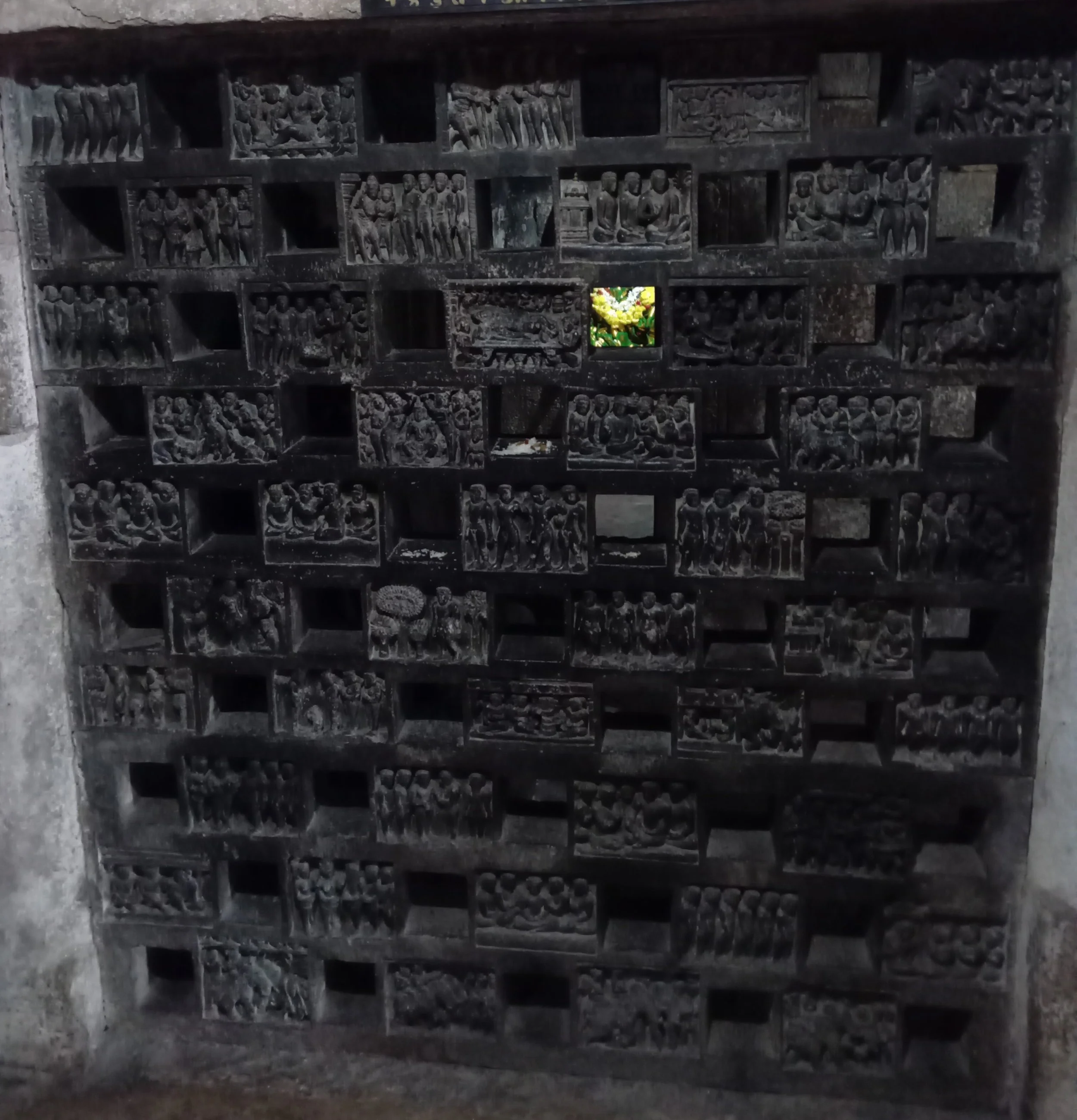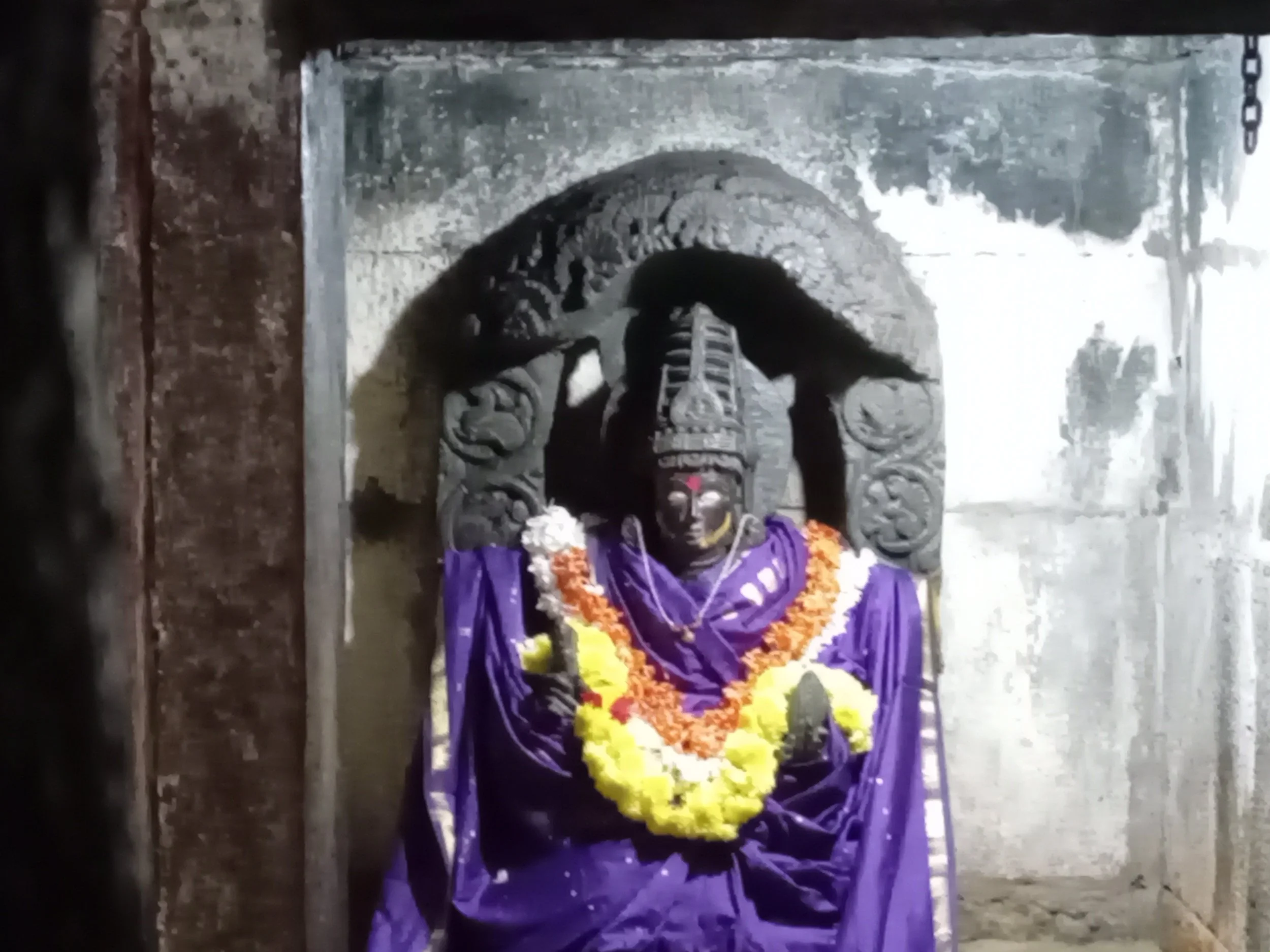Shravanabelagola
Ever since I learned about this place I wanted to go there, but the steps up the hill I heard so much about ended up being more an indictment against our modern way of life than anything else really. I understand there’s folks with mobility issues or who can’t go up steps. Yes, the path is steepish only keeping in mind our sedentary, TV-watching chair-bound elevator-using selves, and there’s generous hand-rails throughout (especially helpful on the way down actually even more than on the way up): so a small, small travail for a great reward afterwards.
The above holds true for both the hills you should go up to see the principal sights here: (a) Vindhyagiri housing the Bahubali statue; and (b) Chandragiri featuring among other things many inscriptions and the famous Chavundaraya Basadi.
Vindhyagiri
First, you encounter the below useful map of the area: we mostly ignored the list, and focused our attention on the steps in front. It was early morning, “winter” in South India. We took off our footwear, put on the socks we brought with us more for protection on the rock (if you’re used to real winters elsewhere, the South Indian versions are either hilarious non-entities or even excruciatingly hot).
Enroute: Tyagada Brahmadeva pillar, circa 983 CE
Also enroute, contemporary with Bahubali, we paused at the Akhanda Gateway: featuring Jain reliefs on the rock nearby, and one of the largest reliefs of Gajalakshmi in India (underlining the curious presence of Hindu motifs in Jain shrines).
Gajalakshmi at the Akhanda gateway
Gommateshwara Bahubali in kaayotsarga (“dismissing the body”) posture
Chandragiri
Less steep, a shallower hill than the above: the sights here might not be as dramatic as the Bahubali statue, but still full of intrigue, significance (the various inscriptions), and even mysterious (such as the continuing presence of Hindu icons in Jain shrines).
Steps to Chandragiri
Pillars and inscriptions galore at Chandragiri: the one in front, Kugge Brahmadeva circa 974 CE
Kugge Brahmadeva up close
The masterful Chavundaraya Basadi
View from Chandgragiri: the extensive coconut orchards below
Parshwanatha basadi: the manastambha pillar in front is likely a later addition
Close-up of the pillar: Yaksha and Kushmandini
The Colossal Parshvanatha
Ubiquitous in various basadis in Chandragiri: Yakshi Kushmandini
And notably in neighboring Chandragupta basadi, either side of a Parshwanatha shrine two lovely latticework windows with carvings: housing Padmavathi and Kushmandini inside.
Latticework window carvings narrating arrival of Acharya Bhadrabahu and Chandragupta Maurya
Padmavathi
Parshwanatha
That’s Kushmandini inside
